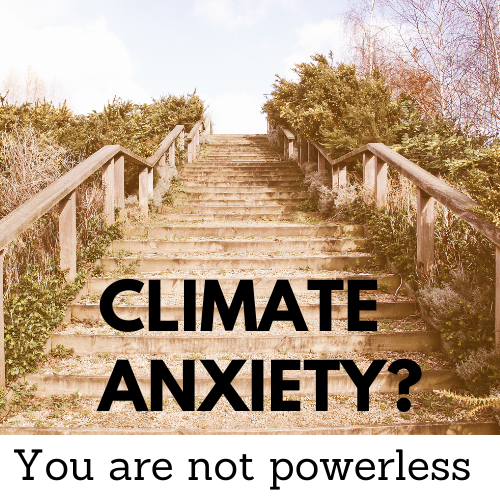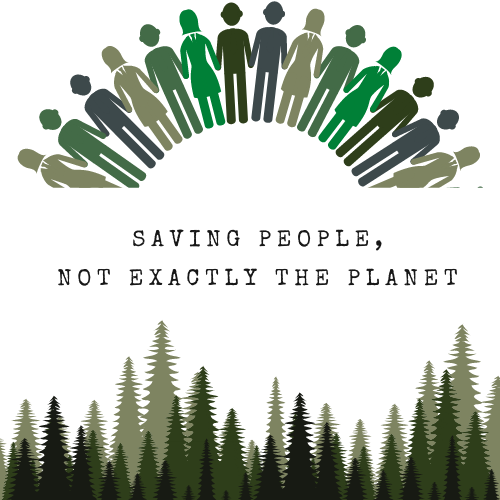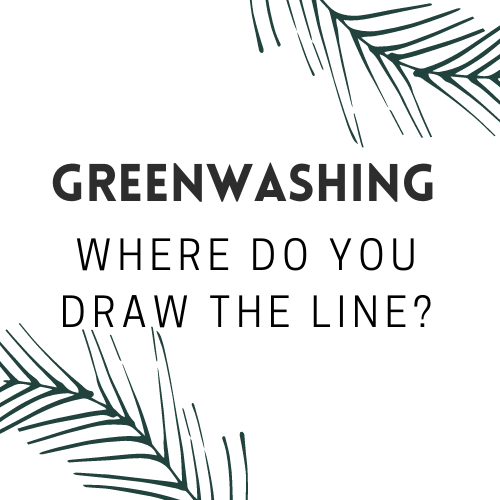
I wrote this while having a moment of frustration about how we treat the planet, ourselves, and each other.
The more we dive into the climate crisis, the more we realize the world is on fire. Much of it feels out of our immediate control. It is easy to dive into figuring out how to help, only to find ourselves feeling utterly hopeless, and then decide it is someone else’s problem. It is difficult to stay focused when so much of the world is disconnected in solving these very complex issues. We need governments, companies, non profits, and individuals to come together to get things done.
With that less than happy note, what are ways that I cope with this climate anxiety? In a complex world, I sometimes need to look for simple ways I can at least do less damage. Many argue that doing these on an individual basis doesn’t help. I strongly disagree.
By changing some individual habits and decisions, you are laying the foundation of habits for your life and for those that could follow you. You are also solidifying the mindset that it matters how we treat the planet we are on. Give yourself more credit!
I don’t recommend making all of these 25 changes at once, but consider the following list and see if there is anything you can tweak in your daily life to do less damage to the world. Many of these are decisions we can make daily. Bookmark the page, comment about one of the habits you took on, and then build on it by trying another one from the list.
1. Avoid shopping as a past time.
We have all talked ourselves into something while standing in a store only to regret it later. Try only going shopping when you need something in particular.
2. Bring reusable grocery bags and produce bags.
100 billion plastic bags are thrown away in America each year. America has no regulations in place to decrease this even though it is bad for the environment. When it is within your power, be a part of the solution, not the problem.
3. Buy and sell secondhand items.
Take the time to place items up for sale or donate instead of throwing them away. Continue the life of that product until it is unusable. Want to dive into this more? Check out my article on secondhand items and how it helps!
4. Consider how long you will be able to use something before purchasing it brand new.
If you don’t think you will get a good amount of use from it, skip it!
5. Borrow or rent instead of purchasing something you only need once.
I used to think I needed to have every tool to prove I was a functional adult. However, I don’t need every tool if I can borrow or rent them from time to time. Don’t forget those lovely libraries! Did you know some libraries even have toy and tool lending services? Pretty neat.
6. Review your investments to see what companies you are supporting.
401K, Roth IRA, stocks, check it out and look into those companies to see what their impact is on the planet. There are lots of companies doing good, purchase from them, promote them, and invest in their success.
7. Skip single-use plastics when you can.
Eating take out at home? Ask them to skip the utensils. Only bought one thing? Ask to skip the bag.
8. Contribute to carbon offsetting programs.
Carbon is a prominent greenhouse gas that is raising the temperature of our planet. The systems in place are currently unsustainable. We burn fossil fuels to power our homes, drive us to work, deliver our packages, and bring food to our tables. Carbon offsetting allows you to contribute toward programs that are working to create alternatives to these carbon emitting systems and some solutions even pull carbon back out of the atmosphere. Check out my article on carbon neutrality for more information.
9. Ask yourself “Is it wasteful?”
This one made a big difference for me. “Do I need balloons at this birthday party I am planning?” “Do these clothing hauls I watch on Youtube encourage overconsumption?” “Do I need this 5th eyeshadow palette when I only wear 3 shades anyway?” The list can go on and on.
10. Find reusable solutions to things you regularly throw away.
Drink a lot of sparkling water? Consider a soda stream machine. Drink a lot of tea? Buy it in bulk from a local tea shop instead of the individual sealed bags from the grocery store.
11. Read an article or a book.
Educate yourself on the state of the planet. You may find a specific problem you are passionate about and learn ways you can help! For example, check out the books The Story of Stuff or Cradle to Cradle to learn the environmental impact of consumerism. (Spoiler: We have a lot of work to do). More into podcasts? Check out Green Dreamer, they give fantastic perspectives you may have never thought about before. Maybe you only watch Youtube? I love watching
Gittemary Johansen, Shelbizleee, Sustainably Vegan.
12. Avoid buying duplicates.
Save the clutter and skip buying duplicates when you can. One flashlight, one lighter, one computer mouse. Do you really need to add to your collection of pens?
13. Plan your meals to try and reduce food waste.
Food waste contributes to methane being released into the atmosphere by it sitting in a landfill, reduce your contribution by trying to consume what you can. Dive a little deeper by checking out my article on Why I am Trying Composting.
14. Try to repair broken items before replacing them.
Everything takes resources to create, extend the life of those items by repairing them when you can.
15. Mention ways to be more sustainable when you notice them at work.
Unnecessary driving, wasted paper, even wasting time on tasks that don’t benefit the company. This all takes resources, so be on the look out for possible suggestions you can make.
16. Air dry clothes when you can.
Saves energy. Extends the life of your dryer and your clothes. Many wins on this one.
17. Conserve energy in your home where possible.
Check with your provider on how much of their power comes from renewables, if you live in my area, you will most likely find that most of it is still coming from fossil fuels. Turn things off when you aren’t using them.
18. Pick up litter.
Lots of trash makes it through our waterways and eventually to the oceans where it can do a lot of damage. By at least getting it to a landfill, you can help keep it out of the oceans. If you are interested in learning about microplastics, check out my article here.
19. Don’t buy it “just because it is on sale”.
You are not responsible for a company making too much of something. Don’t waste the space in your home and encourage those companies for making something that you really didn’t want to begin with.
20. Try to avoid making your hobby a “collection of supplies”.
Boy am I guilty of this one. I have a stack of miniature figurines to paint for D&D. I no longer will allow myself to purchase any new ones until I paint the ones I have.
21. Conserve water in your home when possible.
Water takes energy to go through the water treatment plant each time and make it back to a home. If you can lower your intake, you are conserving energy.
22. Gift experiences or e-gift cards.
I am all for gifting experiences, especially if that gift allows you to spend time with that person. What a wonderful way to create more memories. I cover my minimalism thoughts on gift giving here.
23. Stop streaming if you aren’t watching.
Streaming The Office online for the 100th time? Streaming videos and music online takes resources. It pulls the data from servers that are often found at data centers and this all takes energy. While many data centers are looking to reduce their carbon footprint, try to avoid streaming if you aren’t even watching the show.
24. Give bars of soap a chance.
Skip the plastic bottles and try soap bars. I have been enjoying purchasing local from a soap maker in town and using that for hand soap and body wash. Bonus: It is pretty cool to see what they come up with for new soaps.
25. Embrace repeating an outfit.
No one remembers what you wore or how often you wore it. Find clothes you love and wear them with confidence. Don’t give up your favorite hoodie just because you have had it since college. I dive into the harm that fast fashion has on the environment here.
Conclusion
See something you want to try? Maybe you have another example of something you already do? Leave your thoughts in the comments! I would love to chat with you.

Resources:
In the order they appear in the post
Giving Secondhand a Second Chance
Carbon Neutral Overview: A Key Piece to the Puzzle
Microplastics: Not Just The Ocean’s Problem, It Is Our Problem
One Minimalist’s Thoughts on Gift Giving
Educating Ourselves on Fast Fashion and How to Combat Fast Fashion




